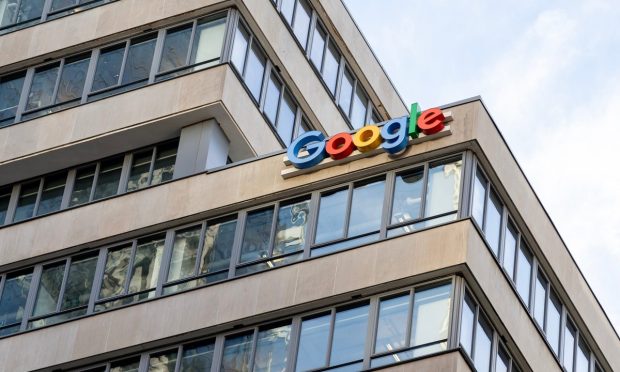Ad Spend, Connected Initiatives Elevate Alphabet/Google in Q3

Ongoing enhancements to search and ads to improve shopper discoverability and connected customer experience stole the spotlight in Alphabet Inc.’s Google Q3 2021 performance, as the company touted new retail partnerships and a creator economy focus for its YouTube platform.
A clear takeaway from the company’s Q3 earnings call on Tuesday (Oct. 26) is that Google Ads is riding a tailwind created by Apple’s recent tracking changes, which have hobbled advertising effectiveness for other platforms, most notably Facebook.
Alphabet’s CEO Sundar Pichai told analysts and investors that “search remains the heart of what we do” as he called the June update of the Multitask Unified Model (MUM) “a significant milestone” in search, with its improved image recognition, light text and language capabilities.
Noting that MUM is also being used to improve Google Lens for visual search, he said the company is “bringing a more visual shopping experience to search powered by the Google Shopping graph” that links shoppers with more than 24 billion product listings from eCommerce merchants.
Mentioning the new Pixel 6 phones, introduced on Oct. 19, along with the Pixel Pass subscription service and upgrades to Google Nest connected home products, he called the Android 12 operating system “secure by default and private by design.”
“New dashboards and indicators make it easier to view and just privacy permissions and disable access to device sensors and location information,” Pichai continued.
Pichai also gave Google Cloud significant airtime, saying it has “unique capabilities” to meet the needs of enterprises, small to medium-sized businesses (SMBs) and digital natives. He continued that real-time data analytics and artificial intelligence (AI) are winning high-profile customers like Deutsche Post DHL and Wendy’s, who are “unlocking data to deliver unique business outcomes.”
Illustrating with connected examples, he said Google’s BigQuery data solution “is reducing costs and driving productivity at Cardinal Health and ATB Financial.”
Pichai added that for AI and machine learning, “GE Appliances … is integrating Vision AI into their next generation smart home appliances, and IKEA retail is using Recommendations AI to drive a 30% increase” in click-through rate.
See also: Google’s US Pixel Pass Subscription Includes Premium YouTube Channels
Travel Spend Takes Off, Along With Retail
Describing considerable growth in its suite of cybersecurity products as hybrid work becomes a fact of life, Pichai moved quickly to YouTube, saying: “We recently surpassed 50 million music and premium subscribers including those in trial, and YouTube Shorts continues to see higher adoption rates. In the past year, the average number of daily first-time creators more than doubled.”
Chief Business Officer Philipp Schindler took over, saying year-over-year performance “was driven by broad-based strength in advertiser spend.” He added that in Q3, retail was the largest contributor to the year-over-year growth of the company’s ads businesses, with other strong contributors including the media, entertainment, finance and travel industries.
Schindler noted that uneven pandemic recovery patterns had impacted some segments and regions, saying that “businesses need as much support now as they did a year and a half ago,” listing new platform capabilities like free booking links to increase traffic to travel partners’ sites.
“Consumers like more choice,” Schindler said. “Travel partners like free exposure and advertisers like to augment paid campaigns with free listings. So last month, we launched free bookings for things to do and a new ad format that makes it easier to promote local experiences.
“Now, when you search zip lining aquariums or the Tokyo Tower, you can buy tickets directly on Google.”
There was no shortage of real-world examples provided, as Schindler called out Alaska Airlines for “harnessing first-party data and automation across search to navigate market fluidity and better understand the lifetime value of their customers. They’ve increased return on ad spend by 30%-plus versus the same period pre-COVID.”
As for retail, Schindler said, “Brick-and-mortar isn’t dead. Instead, omnichannel is in full force, as searches for ‘open now near me’ are up four times globally versus last year.”
Along with solid growth in local shopping quarries, Schindler said this “means people are researching the visits to stores more often before they go. As a result, we’ve seen more advertisers include in-store sales alongside eCommerce goals to drive omnichannel growth.”
Google is putting YouTube deeper into retail, Schindler said, “from shoppable live stream experiments with retailers like Sephora, Target and Walmart, to pilots that let viewers buy directly from the favorite creators videos.”
See also: Google Play to Reduce Subscription Commission Fees for Apps
By the Numbers
As to the headline numbers, CFO Ruth Porat said consolidated Q3 revenues were $65.1 billion, up 41% compared to Q3 2020, posting a profit of $21 billion.
Looking to Q4 and the full year, Porat said, “We expect the ongoing drivers of revenue growth to be hardware do the due to the benefit from the holiday selling season and inclusion of Fitbit, as well as YouTube subscriptions.
“Google Play’s contribution to revenue growth will remain more muted, given the ongoing impact of both lapping the increased level of user engagement that started in the first quarter of 2020 due to the pandemic,” and the fee change that hit in July.
Read more: Google Shopping Revamp Expands Opportunities For Merchants to Turn Search Into Sales
